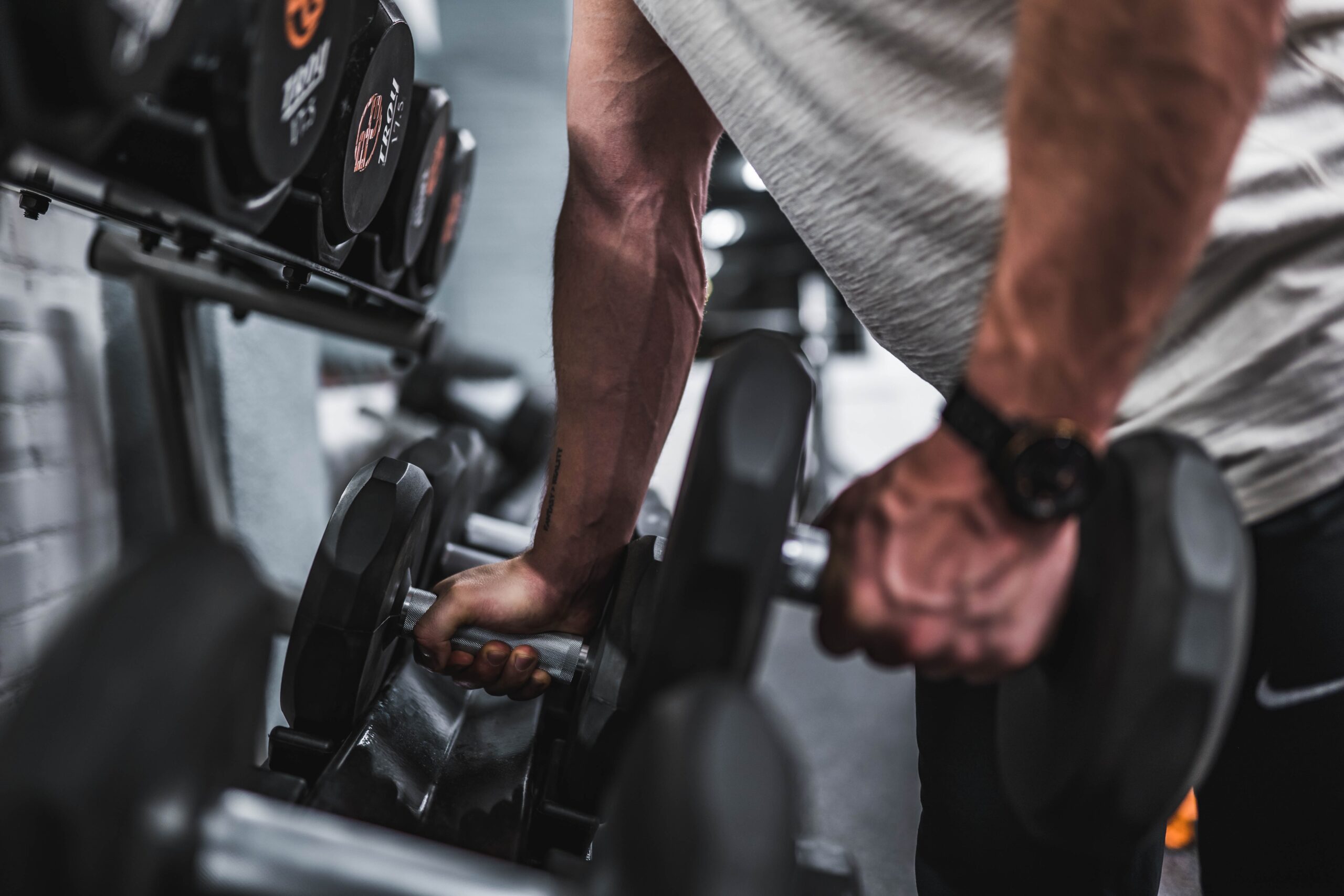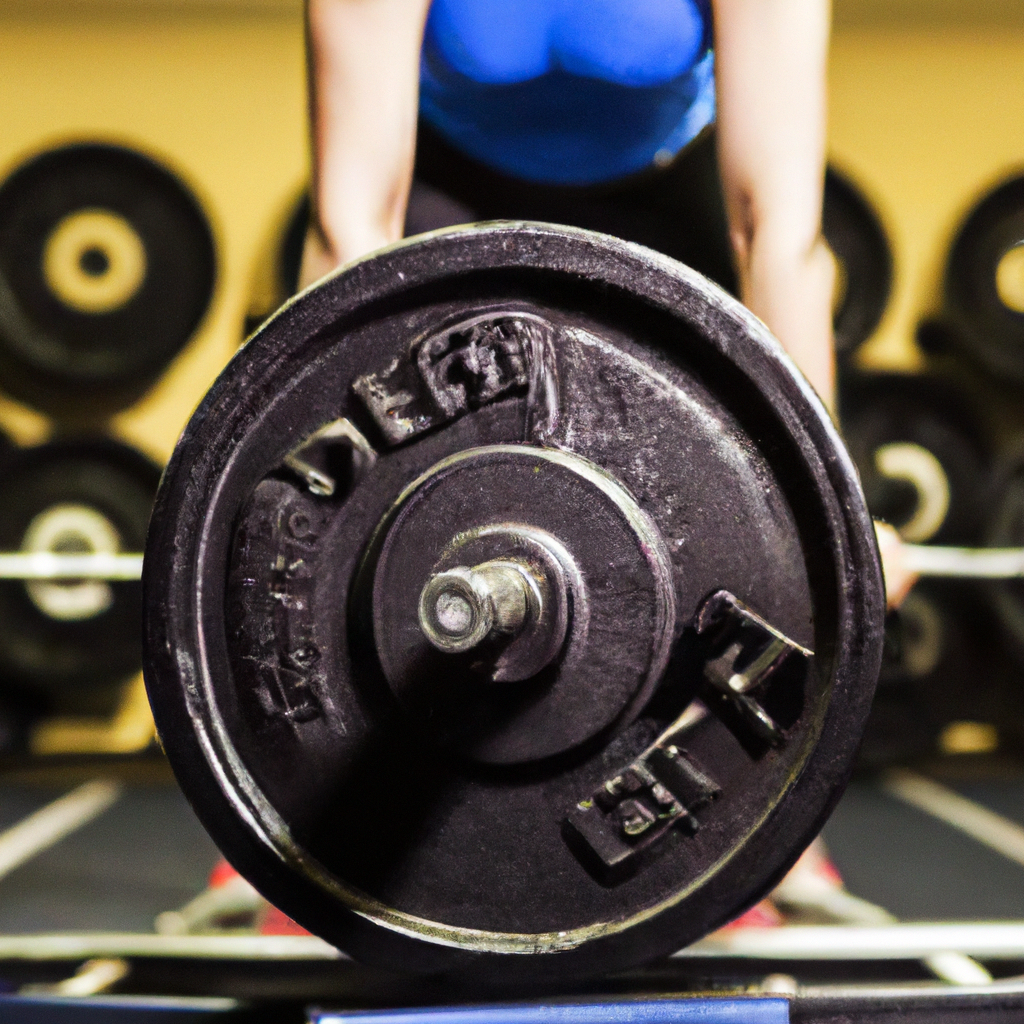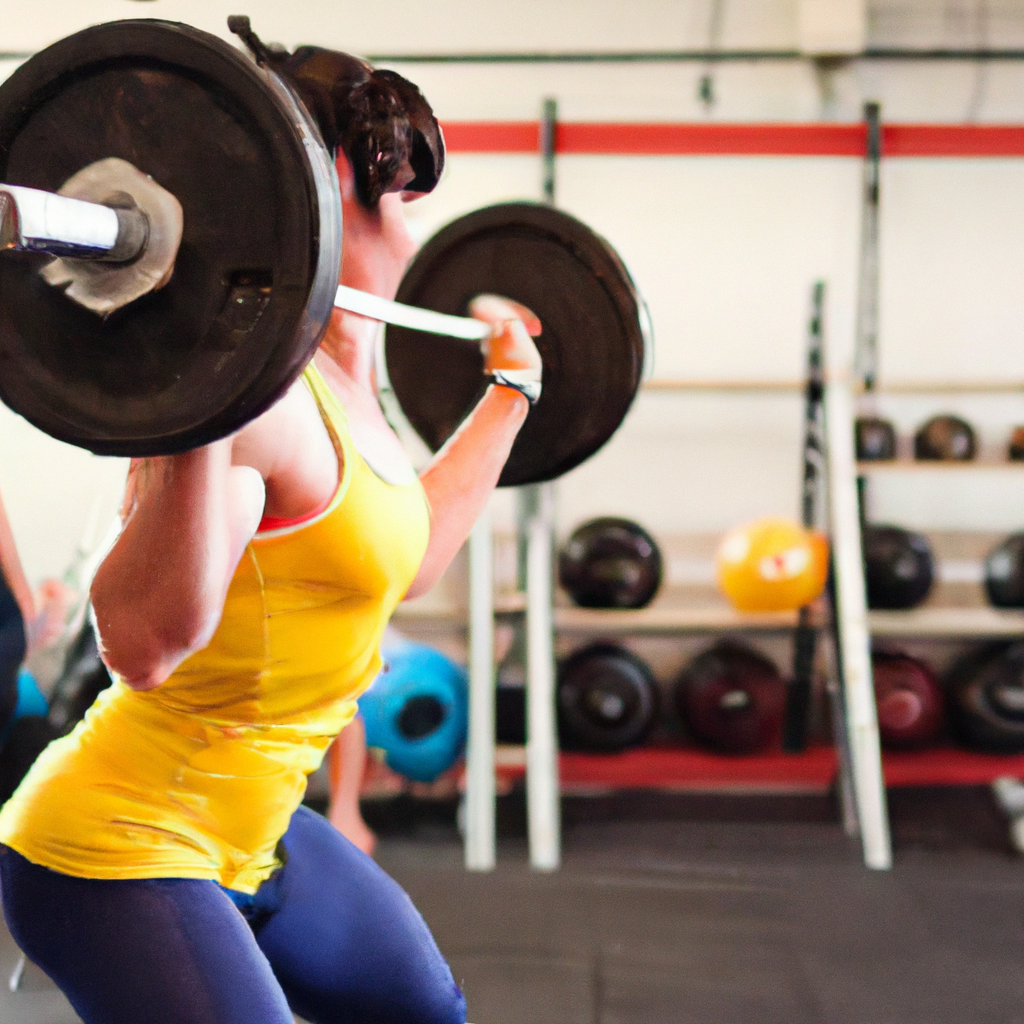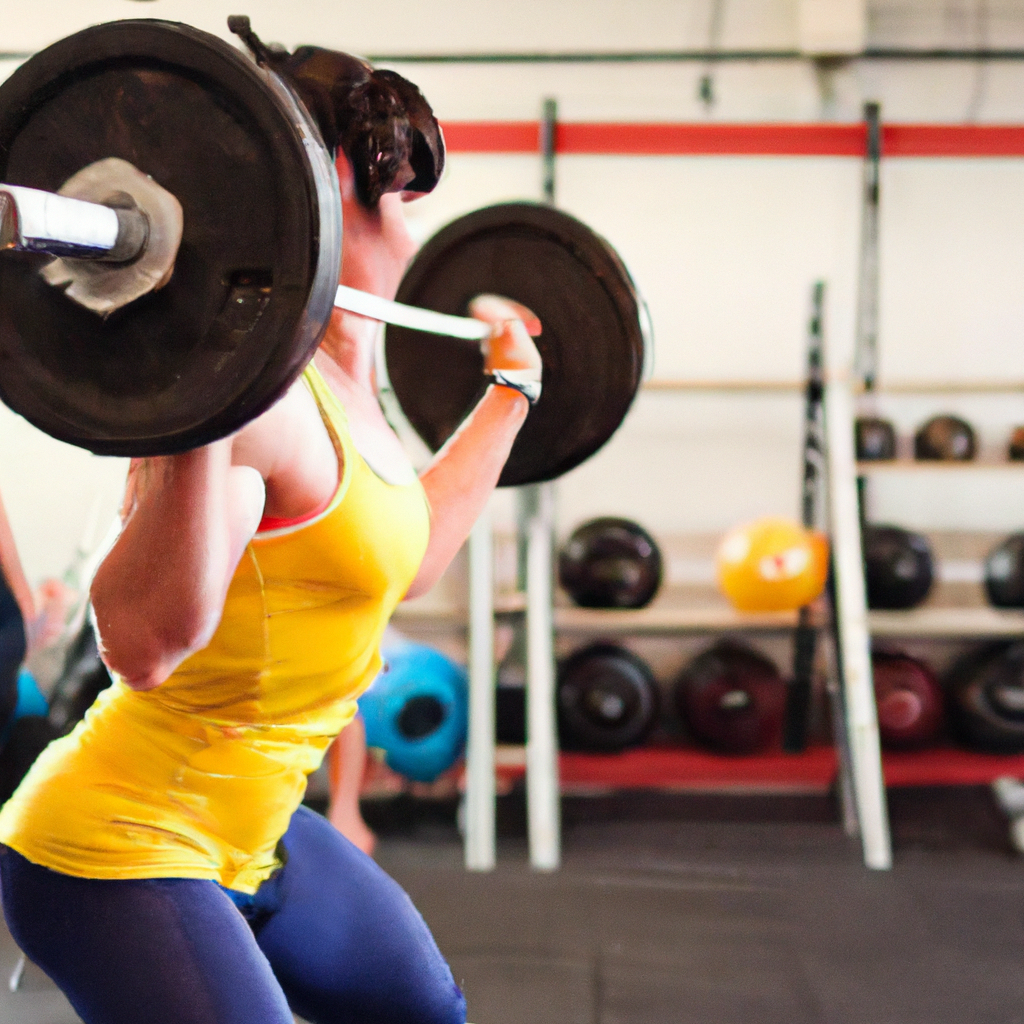Are you a woman looking to start weightlifting but not sure where to begin? Look no further! In this informative article, we will provide you with practical tips and guidance on how to start weightlifting. Whether you have never lifted weights before or are simply looking to incorporate strength training into your fitness routine, we’ve got you covered. So grab your dumbbells and get ready to step into the world of weightlifting!
Understanding the Basics of Weightlifting
Distinguishing the different types of weightlifting
Weightlifting is a broad term that encompasses various types of exercises. It is important to be familiar with the different types of weightlifting in order to choose the ones that align with your goals and interests. The three primary types of weightlifting are powerlifting, Olympic weightlifting, and bodybuilding. Powerlifting focuses on strength and involves three main lifts: the squat, bench press, and deadlift. Olympic weightlifting, on the other hand, emphasizes explosive movements such as the snatch and clean and jerk. Lastly, bodybuilding is centered around developing muscle size and symmetry.
Identifying the parts of the body that are worked
Weightlifting engages multiple muscle groups throughout the body. It is important to have a basic understanding of which muscles are targeted by different weightlifting exercises. For example, squats primarily target the quadriceps, hamstrings, and glutes, while deadlifts work the muscles in the posterior chain, including the lower back, glutes, and hamstrings. Bench pressing primarily engages the chest, triceps, and shoulders. By identifying the specific muscles worked by each exercise, you can tailor your weightlifting program to target specific areas of the body.
Understanding the benefits of weightlifting for women
Weightlifting offers numerous benefits for women beyond simply building muscle. It can help increase bone density, reduce the risk of osteoporosis, improve balance and stability, enhance body composition, boost metabolism, and improve mental well-being. Contrary to common misconceptions, weightlifting does not make women bulky but rather helps create a toned and sculpted physique. Additionally, weightlifting can provide a sense of empowerment and confidence as women challenge themselves and achieve their fitness goals.
Myths and Misconceptions About Women and Weightlifting
Dispelling the ‘weightlifting makes women bulky’ myth
One of the most prevalent myths surrounding weightlifting for women is the fear of becoming bulky. Many women worry that lifting weights will cause them to develop excessive muscle mass, resulting in a masculine appearance. However, this notion is completely unfounded. Women have considerably lower levels of testosterone compared to men, which is the hormone responsible for muscle growth. Weightlifting actually helps women develop lean muscle, which enhances their natural curves and overall physique without adding excessive bulk.
Addressing concerns about weightlifting and femininity
Another common concern among women who are hesitant to begin weightlifting is the idea that it may compromise their femininity. However, weightlifting does not in any way diminish a woman’s femininity. In fact, it can enhance it by improving posture, promoting a healthy body image, and boosting self-confidence. Engaging in weightlifting activities does not make a woman any less feminine; instead, it empowers her to embrace her strength and challenge societal stereotypes.
Debunking the ‘weightlifting is dangerous for women’ myth
Some people mistakenly believe that weightlifting poses a greater risk of injury for women compared to other forms of exercise. This is far from the truth. When performed with proper form and technique, weightlifting is a safe and effective way to strengthen the body. In fact, weightlifting can even help prevent injuries by strengthening the muscles, tendons, and ligaments. As with any physical activity, it is important to start with lighter weights and gradually increase the intensity as you become more comfortable and confident in your abilities.

This image is property of images.unsplash.com.
Ensuring Safety While Weightlifting
Learning the importance of proper form
Proper form is crucial when it comes to weightlifting in order to maximize the benefits and minimize the risk of injury. It is worth investing time to learn and practice correct lifting techniques. Incorrect form can place unnecessary stress on the joints and muscles, leading to injury. Consider working with a qualified trainer or attending weightlifting classes to ensure you learn the proper form from the start. Don’t be afraid to ask for guidance and correction when needed.
Using correct lifting techniques to avoid injuries
In addition to having proper form, using correct lifting techniques is essential for avoiding injuries. This includes techniques such as maintaining a neutral spine, engaging the core, and using controlled movements. Always start with lighter weights to perfect your technique before gradually increasing the load. It is important to listen to your body and know your limits. Pushing yourself too hard or sacrificing form for the sake of heavier weights can increase the risk of injury.
Knowing when to use a spotter
A spotter is someone who can assist you during your weightlifting exercises, particularly during heavy lifts. Having a spotter is important to ensure your safety and provide an added layer of support. A spotter can help you maintain proper form, provide assistance if you struggle to complete a lift, and serve as a source of motivation. When attempting exercises like bench press or squats with heavy weights, it is best to have a spotter to ensure you can lift safely and confidently.
Essential Equipment for Weightlifting
The importance of appropriate footwear
When it comes to weightlifting, having the right footwear is essential for safety and performance. Investing in a pair of weightlifting shoes can provide stability, support, and a solid foundation for your lifts. Weightlifting shoes typically have a raised heel, which can improve ankle mobility and enable you to maintain proper form. Additionally, these shoes offer a secure fit and a flat and non-compressible sole that maximizes contact with the ground.
Choosing the right set of weights
Selecting the appropriate set of weights is crucial for your weightlifting journey. Beginners should start with lighter weights to focus on proper form and technique. Dumbbells and kettlebells are excellent options for beginners as they allow for a variety of exercises and can be easily adjusted for different fitness levels. As you progress and become more comfortable with weightlifting, you can gradually increase the weight load to continue challenging your muscles.
Equipment for safety: weightlifting belts, gloves, and wrist wraps
While not essential, some weightlifters choose to incorporate additional equipment for safety and support. Weightlifting belts can provide stability for the lower back and core during heavy lifting exercises, reducing the risk of injury. Gloves can offer grip and protection against calluses and blisters. Wrist wraps can provide additional support and stability for the wrists during exercises that strain the joint. It is important to note that reliance on these accessories should not replace proper technique and form but rather complement and aid your weightlifting practice.

This image is property of images.unsplash.com.
Designing an Effective Weightlifting Program
Determining your weightlifting goals
Before diving into a weightlifting program, it is important to establish clear goals. Are you looking to build strength, increase muscle mass, improve overall fitness, or enhance athletic performance? Identifying your goals will help guide the structure and intensity of your weightlifting program. Set realistic and attainable goals, and remember to celebrate each milestone along the way. Having specific goals will also help you stay motivated and committed to your weightlifting journey.
Creating a balanced workout schedule
A well-rounded weightlifting program should consist of a variety of exercises that target different muscle groups. It is important to incorporate exercises that work both your upper and lower body, as well as exercises that focus on specific muscle groups. To ensure a balanced workout schedule, consider splitting your workouts into different days or alternating between upper-body and lower-body exercises. This will allow for proper rest and recovery while targeting all major muscle groups.
Incorporating rest and recovery in your program
Rest and recovery are often overlooked aspects of weightlifting but are crucial for achieving optimal results. Overtraining can lead to fatigue, decreased performance, and increased risk of injury. Give your body time to recover and adapt after intense weightlifting sessions. This can be done by incorporating rest days into your schedule and prioritizing sleep and proper nutrition. Additionally, consider incorporating active recovery exercises, such as light cardio or stretching, to promote blood flow and reduce muscle soreness.
Learning the Basics: Essential Weightlifting Exercises
Introducing squats and variations
Squats are one of the most fundamental exercises in weightlifting and work multiple muscle groups simultaneously. Start with bodyweight squats to master the proper form before gradually adding weights. Proper squat form involves keeping your feet shoulder-width apart, bending at the knees and hips, and lowering your body while maintaining a neutral spine. As you progress, you can incorporate variations such as goblet squats, front squats, or sumo squats to target different muscles and challenge yourself further.
Learning about deadlifts and their importance
Deadlifts are another foundational exercise that primarily targets the posterior chain muscles, including the lower back, glutes, and hamstrings. Proper form for deadlifts involves starting with a hip-width stance, gripping the barbell or dumbbells with an overhand grip, and lifting the weight while keeping your back straight and core engaged. Deadlifts are a compound exercise that can help build overall strength and develop a strong and stable core. As with any exercise, start with lighter weights to focus on technique and gradually increase the intensity.
Bench pressing for beginners: how and why
Bench press is a classic weightlifting exercise that primarily targets the chest, triceps, and shoulders. To perform a bench press, lie flat on a bench with your feet firmly planted on the ground. Grab the bar with a grip slightly wider than shoulder-width, unrack the weight, and lower it towards your chest while maintaining a controlled movement. Press the weight back up to the starting position. Bench pressing is not only a great exercise for building upper body strength but also helps improve functional movements such as pushing and pressing in daily activities.

This image is property of images.unsplash.com.
Progressive Overloading: The Key to Weightlifting Success
Understanding the concept of progressive overloading
Progressive overloading refers to gradually increasing the demands placed on the muscle to continually challenge it and promote growth and strength development. This can be achieved by increasing the weight lifted, the number of repetitions performed, or the frequency and intensity of the workouts. Progressive overloading is crucial for avoiding plateaus and ensuring continued progress in your weightlifting journey. It is important to track your progress, set new goals, and make incremental adjustments to your program to facilitate progressive overloading.
How to incorporate progressive overloading in your program
Incorporating progressive overloading in your weightlifting program requires careful planning and tracking. Start by establishing a baseline with lighter weights and a manageable number of repetitions. Gradually increase the weight load as you become more comfortable and strong. Additionally, consider incorporating techniques such as drop sets, supersets, or pyramids to challenge your muscles in different ways. Consistently pushing the boundaries of your abilities within safe limits will promote muscle growth and strength development.
Safety considerations when progressively overloading
While progressive overloading is essential for achieving physical gains, it is important to prioritize safety throughout the process. Never sacrifice proper form and technique in pursuit of heavier weights. It is crucial to listen to your body and be mindful of any signs of pain or discomfort. Incorporating proper warm-up and cool-down routines, stretching, and rest days are equally important. Always strive for a balance between pushing your limits and avoiding potential injuries.
Eating Right for Weightlifting
Understanding the importance of protein in building muscle
A well-rounded diet is crucial for supporting your weightlifting goals. Protein plays a vital role in building and repairing muscle tissue, making it an essential macronutrient for weightlifters. Aim to consume sufficient protein from sources such as lean meats, fish, poultry, eggs, dairy products, legumes, and plant-based proteins. Additionally, consider incorporating protein supplements like whey protein powder to meet your daily protein requirements. Distribute your protein intake evenly throughout the day to support muscle recovery and growth.
Creating a weightlifting-friendly meal plan
Building a weightlifting-friendly meal plan involves striking a balance between macronutrients and providing your body with adequate energy for your workouts. Include a variety of lean proteins, complex carbohydrates, healthy fats, and plenty of fruits and vegetables in your meals. Prioritize whole, unprocessed foods for optimal nutrition. It is also important to fuel your body before and after workouts with a balanced snack or meal. Experiment with different meal combinations to find what works best for you and supports your weightlifting endeavors.
Staying hydrated during your weightlifting workout
Proper hydration is often overlooked but is vital for optimal performance during weightlifting. Dehydration can lead to decreased strength, endurance, and focus. Remember to drink water before, during, and after your workouts to maintain adequate hydration levels. The exact amount of water needed varies depending on factors such as body weight, intensity of exercise, and environmental conditions. Listen to your body and aim to drink enough water to stay hydrated throughout your weightlifting sessions.

Maintaining Consistency in Your Weightlifting Program
Overcoming common motivation hurdles
Maintaining consistency in any fitness journey can be challenging, and weightlifting is no exception. It is important to identify and overcome common motivation hurdles that may arise. Set realistic goals, create a workout schedule that fits into your routine, and find enjoyment in the process. Surround yourself with supportive individuals who share similar interests and goals. Remember to celebrate small victories and progress along the way. Motivation may ebb and flow, but staying committed to your weightlifting program will yield long-term results.
Making weightlifting a habit: tips and tricks
Making weightlifting a habit is key for long-term success. Establishing a routine can help ensure that weightlifting becomes a natural part of your daily life. Schedule your workouts at set times, treat them as non-negotiable appointments, and hold yourself accountable. Set reminders or create a visual tracker to monitor progress and stay motivated. Consider incorporating pre- and post-workout rituals that help you mentally prepare and decompress. By consistently showing up and prioritizing weightlifting, it will become a habit that you enjoy and look forward to.
Dealing with setbacks in your weightlifting journey
Setbacks are a normal part of any fitness journey, including weightlifting. It is important to acknowledge and address setbacks rather than allowing them to derail your progress. Be patient with yourself and understand that setbacks are temporary. If you experience an injury or illness, allow yourself time to recover. Modify your weightlifting program as needed to accommodate any limitations or restrictions. Seek support from healthcare professionals, trainers, or fellow weightlifters to help you navigate setbacks and make a successful comeback in your weightlifting journey.
Finding a Supportive Community
Joining a local weightlifting club
Finding a supportive community can greatly enhance your weightlifting experience. Consider joining a local weightlifting club or gym that offers weightlifting classes or programs. Surrounding yourself with like-minded individuals who share similar goals can provide motivation, accountability, and valuable knowledge. Weightlifting clubs often offer a supportive environment where you can learn from experienced lifters, receive guidance, and forge friendships with people who understand the challenges and triumphs of weightlifting.
Finding online weightlifting communities for women
In addition to local communities, there are numerous online weightlifting communities specifically catered to women. These communities provide a virtual space where women can connect, share their experiences, seek advice, and find inspiration. Joining online weightlifting communities allows you to interact with individuals from diverse backgrounds and expertise levels, creating a supportive network of women who understand the unique challenges and achievements of weightlifting. Social media platforms, forums, and dedicated websites are great places to start exploring these online communities.
The importance of having a supportive team or workout buddy
Having a supportive team or workout buddy can significantly impact your weightlifting journey. A workout buddy can provide motivation, accountability, and friendly competition. They can spot you during heavy lifts, offer guidance on form and technique, and provide encouragement when you need it most. A supportive team or workout buddy can make your weightlifting sessions more enjoyable and help you stay consistent. Consider partnering up with a friend, family member, or fellow gym-goer to create a positive and uplifting environment for your weightlifting endeavors.


